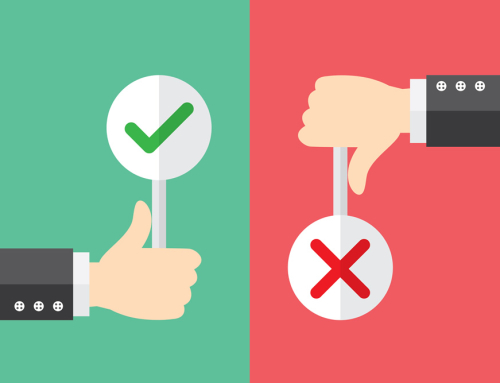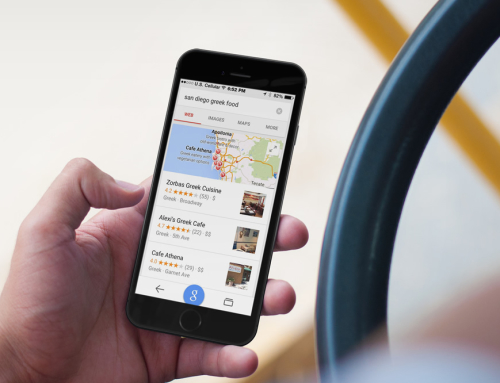The Evolution of Personalization
It’s a predictable pattern—the concomitant rise of technology and user expectation. When Zappo’s revolutionized how we find shoes online, consumers expected it everywhere. When mobile devices delivered the mobile web, consumers demanded mobile experiences that work. Now, just as the technologies that enable enhanced targeting have rapidly evolved, so too have the expectations of consumers.
Today’s “empowered consumer” has come to expect, if not demand, a high degree of precision in the brand messaging delivered to them. As marketers, the onus has never been so squarely upon us to refine our messaging strategies in light of these expectations. “Personalization” has emerged as one of marketing’s most popular buzzwords—to the point that personalization may no longer seem like the future of data-driven marketing but, rather, the expectation. Some experts have gone so far as to say “If it’s not personal, it’s irrelevant.”
Personalization at most organizations is still in its infancy and is not much more sophisticated than sending someone a digital ad based on the last product they viewed online or providing a level of custom content to the user’s next website visit. Personalization, however, is quickly advancing to developing a comprehensive understanding of individuals from all channels, both online and in the physical world, then assembling the most relevant message in real time and delivering that message in the right channel.
Develop a comprehensive understanding of individual consumers by linking all available data to persistent profiles.
Building great brand experiences starts by understanding the consumer. The sophistication of marketing automation systems, the backbone of personalization, has advanced at breakneck pace over the last several years. Skilled marketers are building more elaborate workflows that go well beyond segmentation to establishing an individual profile that through its interactions with the brand can trigger extremely targeted messaging.
A vast range of data points can assist in understanding the consumer, including:
- Who the consumer is
- Demographics
- What they care about
- Behavioral data
- Web browsing history
- App usage
- Video plays
- Content engaged
- Referrals to others
- Emails opened
- Click-throughs
- Where they go
- Location-based data
- On-site integrations
- What they buy
- Online purchase data
- Offline purchase data
- Where they are in the customer journey
- Prospect
- Within purchase consideration
- Existing customer
- Lapsed customer
- Referred customer
There are literally thousands of dimensions to each consumer. The key is to collect and unite these insights into a customer profile, then use that information to deliver the most targeted messaging in the channel and time most likely to connect.
Find new ways to understand consumers beyond the digital footprint
Marketers are finding clever ways to track beyond the digital footprint through the use of on-site collection points and devices such as POS integration, review and feedback integration, location-based apps and beacons. A mobile app for a retail store, for example, may track a user’s behavior at the physical location using beacons or through barcodes the user scans.
Similarly, if you know your targeted consumer is attending a trade show, create an app that not only offers the user value, but also tracks where they visited in that trade show and what content they consumed, then feed that information back to their individual profile within your marketing automation platform. Actions within the physical world typically signal a consumer closer to the end of a considered purchase and therefore may merit greater weight in your automation workflow.
Dynamically create personal brand experiences in real time.
Once you’ve developed a deep understanding of a consumer, analyze and make decisions based on the variety of data points you’ve amassed to assemble the most relevant and impactful messaging possible. This means moving beyond segment-based creative with limited variations based on simple business rules. Personalization necessitates the use of sophisticated algorithms to evaluate all of those data points and analyze which of the many potential iterations of an ad or other content will most resonate with a consumer, including product, image, copy, purchase channel, where a person is in the purchase funnel, and the types of offers they’re most likely to respond to. Once a decision is made on the most relevant message, it is rendered in either real time for digital media, or through batch decisions for offline media. The entire decision and rendering process needs to occur in milliseconds to meet the fast-paced needs of today’s programmatic media.
Deliver brand experiences where the consumer is.
True personalization, however, encompasses more than understanding individual consumers at a deep level and being able to take action via dynamic generation and placement of content. It is about maintaining continuity of voice—engaging in a persistent and consistent conversation with consumers over time and across channels so that every message in the journey builds upon the last. Consumers do not interact in channel silos. They interact across multiple devices and offline channels. Because of this, brands must employ consumer-centric messaging strategies that engages consumers where and when they are most receptive, and where all cookies and device IDs are tied to profiles that are linked with an ever-more-accurate consumer profile. In turn, every interaction through any addressable channel should be based on, and tied back to, that persistent and individual profile.
Establishing this level of connectivity across desktop, in-app, mobile web, email and social is challenging, but it enables brands to deliver a much more cohesive and personalized brand experience to consumers—one that drives conversion. Brands that adopt device- and channel-agnostic approaches while delivering a consistent message will be best positioned to create and maintain the ongoing conversations that consumers value and that build true brand loyalty.
While it may seem daunting at first, personalization is the next natural step in marketers’ ongoing quest to deliver the right message to the right person at the right time.






